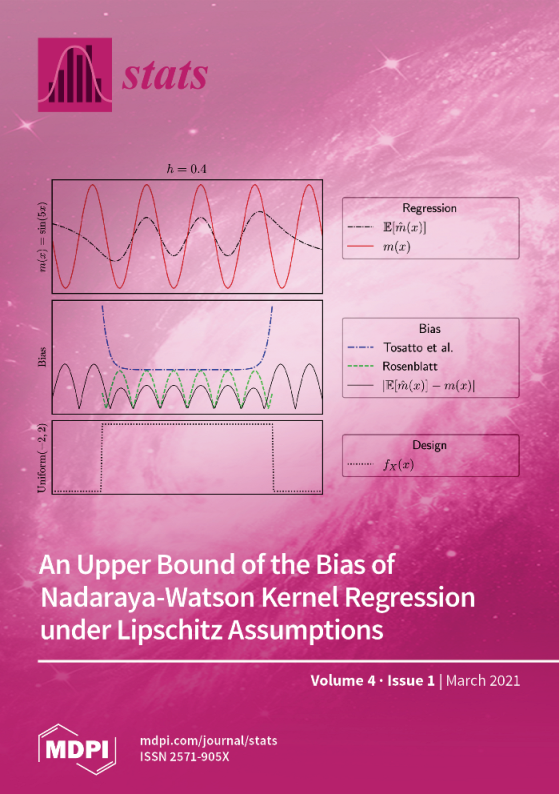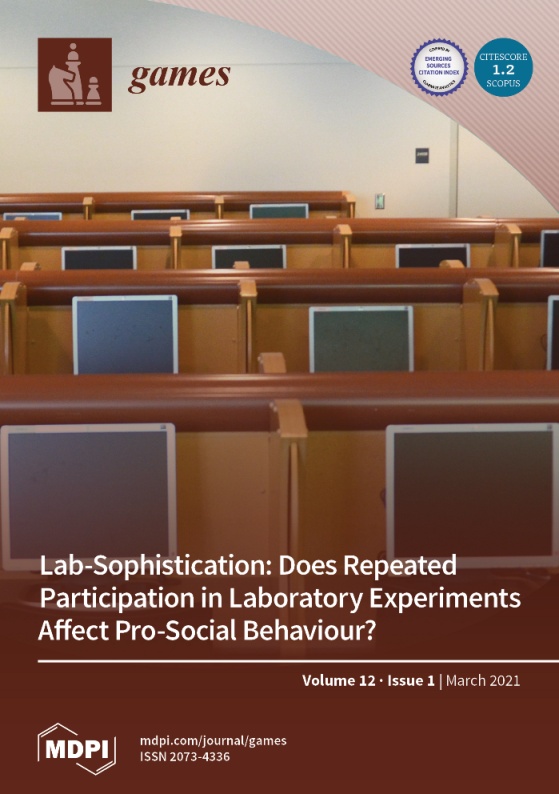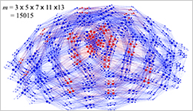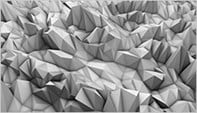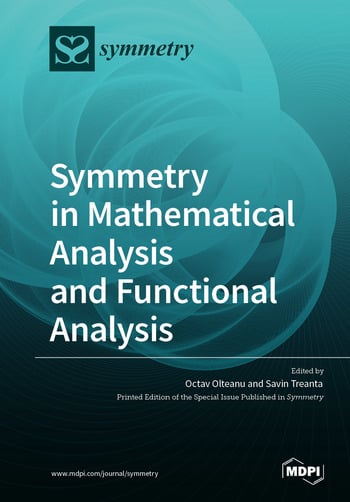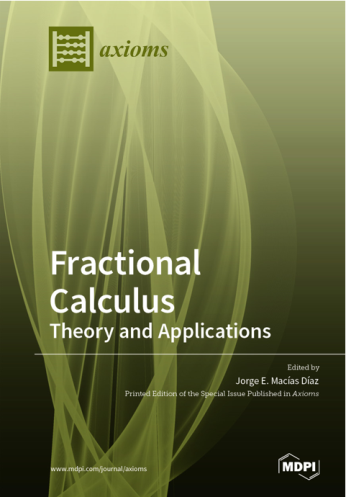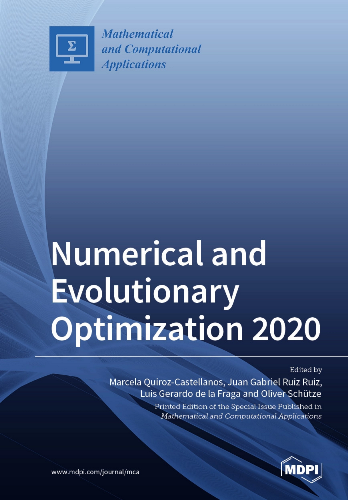
Journal Menu
► ▼ Journal Menu-
- Symmetry Home
- Aims & Scope
- Editorial Board
- Reviewer Board
- Topical Advisory Panel
- Instructions for Authors
- Special Issues
- Topics
- Sections & Collections
- Article Processing Charge
- Indexing & Archiving
- Editor’s Choice Articles
- Most Cited & Viewed
- Journal Statistics
- Journal History
- Journal Awards
- Conferences
- Editorial Office
Journal Browser
► ▼ Journal BrowserNeed Help?
Announcements
19 April 2023
Symmetry | Invitation to Read Articles on Crystals in the “Chemistry and Symmetry/Asymmetry” Section
1. “Blue Phase Liquid Crystals with Tailored Crystal Orientation for Photonic Applications”
by SeongYong Cho and Masanori Ozaki
Symmetry 2021, 13(9), 1584; https://doi.org/10.3390/sym13091584
Available online: https://www.mdpi.com/2073-8994/13/9/1584
2. “Lamellar Tetragonal Symmetry of Amphiphilic Thermotropic Ionic Liquid Crystals in the Framework of Other Closely Related Highly Ordered Structures”
by Michael Arkas, Marilina Douloudi, Michail Vardavoulias and Theodora Katsika
Symmetry 2022, 14(2), 394; https://doi.org/10.3390/sym14020394
Available online: https://www.mdpi.com/2073-8994/14/2/394
3. “Extreme Poisson’s Ratios of Honeycomb, Re-Entrant, and Zig-Zag Crystals of Binary Hard Discs”
by Mikołaj Bilski, Paweł M. Pigłowski and Krzysztof W. Wojciechowski
Symmetry 2021, 13(7), 1127; https://doi.org/10.3390/sym13071127
Available online: https://www.mdpi.com/2073-8994/13/7/1127
4. “Racemic and Meso Crystal Structures of an Axial-Chiral Spirobi-(dinaphthoazepin)ium Salt: Emergence of an S4-Symmetric Molecule”
by Philipp Honegger, Natalie Gajic, Alexander Prado-Roller and Michael Widhalm
Symmetry 2021, 13(8), 1365; https://doi.org/10.3390/sym13081365
Available online: https://www.mdpi.com/2073-8994/13/8/1365
5. “Liquid Crystal-Based Geometric Phase-Enhanced Platform for Polarization and Wavefront Analysis Techniques with the Short-TeraHertz FEL Oscillator TerRa@BriXSinO”
by Bruno Piccirillo, Domenico Paparo, Andrea Rubano, Antonello Andreone, Marcello Rossetti Conti, Dario Giove, Verónica Vicuña-Hernández, Can Koral, Maria Rosaria Masullo, Giovanni Mettivier et al.
Symmetry 2023, 15(1), 103; https://doi.org/10.3390/sym15010103
Available online: https://www.mdpi.com/2073-8994/15/1/103
14 April 2023
Symmetry Webinar | Machine Learning Enhanced Multi-Messenger Probes for New Physics and Cosmology, 18 May 2023

This webinar aims to explore the fundamental relationship between cosmology and particle physics. It will offer some examples of approaches to solve the open problems of fundamental physics with a special emphasis on the involvement of machine learning in physical, astrophysical and cosmological studies. We would like to attract and involve interested participants in the thorough discussion of what comes beyond the standard models, such as the exciting topics of research paving the way in fundamental science. The fruitful results of such discussions can be considered for publication in the Symmetry (ISSN: 2073-8994) Special Issue “Symmetry beyond the Standard Models of Cosmology, High Energy Physics and Quantum Field Theory”.
Date: 18 May 2023, 10:00 a.m. CEST
Register now for free!
Webinar Chair and Keynote Speakers:
- Prof. Dr. Maxim Khlopov, 1. Director of Virtual Institute of Astroparticle physics, Paris, France; 2. National Research Nuclear University MEPhI, President of Center for Cosmoparticle Physics Cosmion, Main Researcher of Research Institute of Physics of Southern Federal University, Russia
- Prof. Dr. Antonino Marciano, 1. Department of Physics, Fudan University, 200437 Shanghai, China; 2. INFN—Frascati Laboratories, 00044 Frascati RM, Italy
- Dr. Roman Pasechnik, Department of Physics, University of Lund, Lund, Scania, Sweden
|
Speaker/Presentation |
|
Time in CEST |
|
|
Prof. Dr. Maxim Yu. Khlopov |
|
10:00–10:10 a.m. |
|
|
Prof. Dr. Antonino Marciano |
|
10:10–10:50 a.m. |
|
|
Dr. Roman Pasechnik |
|
10:50–11:30 a.m. |
|
|
Q&A Session |
|
11:30–11:55 a.m. |
|
|
Prof. Dr. Maxim Yu. Khlopov |
|
11:55–12:00 a.m. |
|
Relevant Special Issue:
“Symmetry beyond the Standard Models of Cosmology, High Energy Physics and Quantum Field Theory”
Guest Editors: Prof. Dr. Maxim Yu. Khlopov and Prof. Dr. Vitaly Beylin
Deadline for manuscript submissions: 30 June 2023
This is a free webinar. After registering, you will receive a confirmation email containing information on how to join the webinar. Registrations with academic institutional email addresses will be prioritized. Certificates of attendance will be delivered to those who attend the live webinar.
Unable to attend? Register anyway and we will let you know when the recording is available to watch.
10 April 2023
Symmetry Webinar | Symmetry in Functional Equations and Analytic Inequalities Held on 12 May 2023

On 12 May 2023, MDPI and Symmetry organized a webinar “Symmetry in Functional Equations and Analytic Inequalities”. The webinar focused on the quantification of the irregularity and complexity of time series and multidimensional data through the use of entropy measures.
Please note that this webinar is associated with the Special Issue in Entropy titled “Entropy Measures to Assess Irregularity and Complexity of Time Series and Multidimensional Data”. The deadline is 31 July 2023.
You can watch the recorded webinar at the following link: https://youtu.be/5Y7osiJA31E.
Webinar Chair and Keynote Speakers:
- Prof. Alina Alb Lupas, Department of Mathematics and Computer Science, University of Oradea, Romania;
- Prof. Dr. George A. Anastassiou, Department of Mathematical Sciences, University of Memphis, Memphis, TN 38152, USA;
- Prof. Dr. Dumitru Baleanu, Department of Mathematics, Cankaya University, Ankara, Turkey;
- Dr. Firas Ghanim, Department of Mathematics, College of Sciences, University of Sharjah, UAE;
- Dr. Oros Georgia Irina, Department of Mathematics and Computer Science, University of Oradea, Romania;
- Prof. Dr. Waggas Galib Atshan, Department of Mathematics, College of Science, University of Al-Qadisiyah, Iraq.
31 March 2023
Symmetry | Invitation to Read the Editor’s Choice Topic “Particle Physics” Articles in Section “Physics and Symmetry/Asymmetry”
1. “Thinking Outside the Box: Numerical Relativity with Particles”
by Stephan Rosswog, Peter Diener and Francesco Torsello
Symmetry 2022, 14(6), 1280; https://doi.org/10.3390/sym14061280
Available online: https://www.mdpi.com/2073-8994/14/6/1280
2. “Purely Virtual Particles in Quantum Gravity, Inflationary Cosmology and Collider Physics”
by Damiano Anselmi
Symmetry 2022, 14(3), 521; https://doi.org/10.3390/sym14030521
Available online: https://www.mdpi.com/2073-8994/14/3/521
3. “First Results on the Revealing of Cognate Ancestors among the Particles of the Primary Cosmic Rays That Gave Rise to Extensive Air Showers Observed by the GELATICA Network”
by Yuri Verbetsky, Manana Svanidze, Ophir Ruimi, Tadeusz Wibig, Levan Kakabadze, Piotr Homola, David E. Alvarez-Castillo, Dmitry Beznosko, Edward K. Sarkisyan-Grinbaum and Olaf Bar et al.
Symmetry 2022, 14(8), 1749; https://doi.org/10.3390/sym14081749
Available online: https://www.mdpi.com/2073-8994/14/8/1749
4. “Improved Search for Neutron to Mirror-Neutron Oscillations in the Presence of Mirror Magnetic Fields with a Dedicated Apparatus at the PSI UCN Source”
by Nicholas J. Ayres, Zurab Berezhiani, Riccardo Biondi, Georg Bison, Kazimierz Bodek, Vira Bondar, Pin-Jung Chiu, Manfred Daum, Reza Tavakoli Dinani, Cornelis B. Doorenbos et al.
Symmetry 2022, 14(3), 503; https://doi.org/10.3390/sym14030503
Available online: https://www.mdpi.com/2073-8994/14/3/503
5. “Particle Creation and the Schwinger Model”
by José Navarro-Salas and Silvia Pla
Symmetry 2022, 14(11), 2435; https://doi.org/10.3390/sym14112435
Available online: https://www.mdpi.com/2073-8994/14/11/2435
6. “Particle Production in Strong Electromagnetic Fields and Local Approximations”
by Ivan A. Aleksandrov, Denis G. Sevostyanov and Vladimir M. Shabaev
Symmetry 2022, 14(11), 2444; https://doi.org/10.3390/sym14112444
Available online: https://www.mdpi.com/2073-8994/14/11/2444
7. “Particle Multiplicity Fluctuations and Spatiotemporal Properties of Particle-Emitting Source of Strongly Interacting Matter for NICA and RHIC Energies”
by Mariya Cheremnova, Alexey Chernyshov, Yevheniia Khyzhniak, Olga Kodolova, Valentin Kuzmin, Igor Lokhtin, Ludmila Malinina, Konstantin Mikhaylov and Grigory Nigmatkulov
Symmetry 2022, 14(7), 1316; https://doi.org/10.3390/sym14071316
Available online: https://www.mdpi.com/2073-8994/14/7/1316
8. “Closed-Form Solution of Adiabatic Particle Trajectories in Axis-Symmetric Magnetic Fields”
by Fabio Sattin and Dominique Franck Escande
Symmetry 2021, 13(10), 1784; https://doi.org/10.3390/sym13101784
Available online: https://www.mdpi.com/2073-8994/13/10/1784
9. “Morphology of an Interacting Three-Dimensional Trapped Bose–Einstein Condensate from Many-Particle Variance Anisotropy”
by Ofir E. Alon
Symmetry 2021, 13(7), 1237; https://doi.org/10.3390/sym13071237
Available online: https://www.mdpi.com/2073-8994/13/7/1237
10. “An Interferometric Method for Particle Mass Measurements”
by Eleonora Pasino, Simone Cialdi, Giovanni Costantini, Rafael Ferragut, Marco Giammarchi, Stefano Migliorati, Massimiliano Romé, Timothy Savas and Valerio Toso
Symmetry 2021, 13(7), 1232; https://doi.org/10.3390/sym13071232
Available online: https://www.mdpi.com/2073-8994/13/7/1232
11. “Particle–Antiparticle Asymmetry in Relativistic Deformed Kinematics”
by José Manuel Carmona, José Luis Cortés and José Javier Relancio
Symmetry 2021, 13(7), 1266; https://doi.org/10.3390/sym13071266
Available online: https://www.mdpi.com/2073-8994/13/7/1266
12. “Galactic Anomalies and Particle Dark Matter”
by Malcolm Fairbairn
Symmetry 2022, 14(4), 812; https://doi.org/10.3390/sym14040812
Available online: https://www.mdpi.com/2073-8994/14/4/812
by Kimmo Tuominen
Symmetry 2021, 13(10), 1945; https://doi.org/10.3390/sym13101945
Available online: https://www.mdpi.com/2073-8994/13/10/1945
14. “Temporal Klein Model for Particle-Pair Creation”
by José Tito Mendonça
Symmetry 2021, 13(8), 1361; https://doi.org/10.3390/sym13081361
Available online: https://www.mdpi.com/2073-8994/13/8/1361
30 March 2023
Meet Us at the European Human Genetics Conference 2023 (ESHG 2023), 10–13 June 2023, Glasgow, UK

MDPI will be attending the European Human Genetics Conference 2023 (ESHG 2023), held in Glasgow, UK, from 10 to 13 June 2023.
The following MDPI journals will be represented:
If you plan on attending this conference, feel free to stop by our booth #824. Our delegates look forward to meeting you in person to answer any questions you may have.
For more information about the conference, please visit the following link: https://2023.eshg.org/.
28 March 2023
Symmetry Webinar | Nonlinear Analysis and Its Applications in Symmetry II, 5 April 2023

On Wednesday, 5 April 2023, MDPI and the journal Symmetry (ISSN: 2073-8994) organized a webinar on symmetry, titled “Nonlinear Analysis and Its Applications in Symmetry II”. The webinar focused on nonlinear analysis and its applications.
This webinar was devoted to recent advances in nonlinear analysis and its applications. It consisted of two talks. In the first talk delivered by Dr. Alexander Ramm, the speaker presented his recent results on Navier–Stokes equations. In the second talk by Prof. Dr. Alexander J. Zaslavski, a feasibility problem with infinite sets in a metric space was discussed. The speaker presented a new algorithm for this problem and analyzed its convergence.
Please note that this webinar is associated with a Special Issue in Symmetry, titled “Fixed Point Theory and Its Applications Dedicated to the Memory of Professor William Arthur Kirk”. The deadline for submissions is 30 September 2023.
Webinar Chair and Keynote Speaker:
- Dr. Alexander Zaslavski, Department of Mathematics, The Technion, Israel Institute of Technology, Israel
- Prof. Dr. Alexander G. Ramm, Department of Mathematics, Kansas State University, Manhattan, KS 66506, USA
24 March 2023
Meet Us at the 13th AIMS Conference on Dynamical Systems, Differential Equations and Applications, 31 May–June 4 2023, Wilmington, NC, USA

Mathematics (ISSN: 2227-7390) be attending the 13th AIMS Conference on Dynamical Systems, Differential Equations and Applications, which will occur from May 31 to June 4 2023 at the University of North Carolina Wilmington, Wilmington, NC, USA. The goals of the meeting include a cross-fertilization of ideas from different application areas and increased communication between the mathematicians who develop dynamical systems techniques and the applied scientists who use them.
The following MDPI journals will be represented:
- Mathematics;
- Axioms;
- Symmetry;
- Fractal Fract;
- Dynamics;
- AppliedMath;
- Computation;
- Systems.
15 March 2023
Symmetry | Collection of Articles by Female Scholars
Female researchers have made significant contributions to the field of science, and we have selected six high-quality articles to share where female scholars are the corresponding authors. We hope you enjoy reading them.
- “Does Mobility of the Ankle Joint Depends on Length of the Free Part of the Achilles Tendon?”
by Tomasz Wawrzyński, Bernadeta Angelika Pietrzak and Anna Mika
Symmetry 2022, 14(11), 2313; https://doi.org/10.3390/sym14112313
Available online: https://www.mdpi.com/2073-8994/14/11/2313
- “2d, or Not 2d: An Almost Perfect Mock of Symmetry”
by Vladislav Komarov, Ruslan Galiev and Sofya Artemkina
Symmetry 2023, 15(2), 508; https://doi.org/10.3390/sym15020508
Available online: https://www.mdpi.com/2073-8994/15/2/508
- “New Formulations on Kinetic Energy and Acceleration Energies in Applied Mechanics of Systems”
by Iuliu Negrean, Adina Crișan, Florina Șerdean and Sorin Vlase
Symmetry 2022, 14(5), 896; https://doi.org/10.3390/sym14050896
Available online: https://www.mdpi.com/2073-8994/14/5/896
- “Nonlinear Transformation of Sine Wave within the Framework of Symmetric (2+4) KdV Equation”
by Oxana Kurkina and Efim Pelinovsky
Symmetry 2022, 14(4), 668; https://doi.org/10.3390/sym14040668
Available online: https://www.mdpi.com/2073-8994/14/4/668
- “Coupling Hadron-Hadron Thresholds within a Chiral Quark Model Approach”
by Pablo G. Ortega and David R. Entem
Symmetry 2021, 13(2), 279; https://doi.org/10.3390/sym13020279
Available online: https://www.mdpi.com/2073-8994/13/2/279
- “Progress on the Stereoselective Synthesis of Chiral Molecules Based on Metal-Catalyzed Dynamic Kinetic Resolution of Alcohols with Lipases”
by Raffaella Ferraccioli
Symmetry 2021, 13(9), 1744; https://doi.org/10.3390/sym13091744
Available online: https://www.mdpi.com/2073-8994/13/9/1744
14 March 2023
International Day of Mathematics – Mathematics for Everyone!

Mathematics plays an indispensable role in shaping the world we inhabit, propelling scientific breakthroughs and technological advancements, and fostering social and economic progress. This year's theme, "Mathematics for Everyone", underscores the universal and all-encompassing nature of mathematics, and its potential to positively impact individuals from all walks of life and diverse backgrounds.
We are confident that the prestigious Mathematics subject journals in MDPI, including AppliedMath, Axioms, Computation, Fractal and Fractional, Games, MCA, Stats and Symmetry, will offer ideal communication platforms to enhance scientific collaboration in line with the International Day of Mathematics theme. Let us harness the full potential of these platforms to propel Mathematics to new heights of development and innovation.


|
Axioms A Three-Phase Fundamental Diagram from Three-Dimensional Traffic Data Axioms 2021, 10(1), 17; https://doi.org/10.3390/axioms10010017 |
|
|
Stats An Upper Bound of the Bias of Nadaraya-Watson Kernel Regression under Lipschitz Assumptions Stats 2021, 4(1), 1-17; https://doi.org/10.3390/stats4010001 |
|
|
Games Games 2021, 12(1), 18; https://doi.org/10.3390/g12010018 |

|
Applications of Number Theory to the Sciences and Mathematics Edited by Darin J. Ulness Submisison deadline 30 April 2023 |
Mathematical Models: Methods and Applications Edited by OPhir Nave and Svetlana Bunimovich-Mendrazitsky Submisison deadline 30 April 2023 |

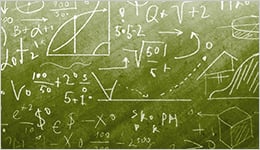 |
MDPI International Day of Mathematics Webinar 2023 14 Mar 2023, 10:00 (CET) Session 1: 10:00 am–12:00 pm CET Session 2: 14:30 pm–16:30 pm CET Free to register for the two Sessions. Recordings will be available on Sciforum shortly afterwards. |

14 March 2023
Join Us at the 13th National Symposium on the Molecular and Structural Characterization of Polymers, 31 March–2 April 2023, Shenzhen, China

Conference: 13th National Symposium on the Molecular and Structural Characterization of Polymers
Date: 31 March–2 April 2023
Place: Shenzhen, China
MDPI will be attending the 13th National Symposium on the Molecular and Structural Characterization of Polymers as an exhibitor. This meeting will be held at Hyatt Regency Shenzhen Yantian, Shenzhen, China, from 31 March to 2 April 2023. The organizing committee consists of the Polymer Materials Analytical Technology and Characteristic Methods Committee of Chinese Chemical Society. Through this meeting, we wish to contribute to the discussion on the progress in the field of polymer characterization.
The following MDPI journals will be represented:
- Polymers;
- Gels;
- Colloids and Interfaces;
- Symmetry;
- Surfaces;
- IJMS;
- Macromol;
- Nanomaterials;
- Analytica.
If you are attending this conference, please feel free to start a conversation with us. Our delegates look forward to meeting you in person and answering any questions that you may have. For more information about the conference, please visit https://poly-struc2022.scievent.com/.












